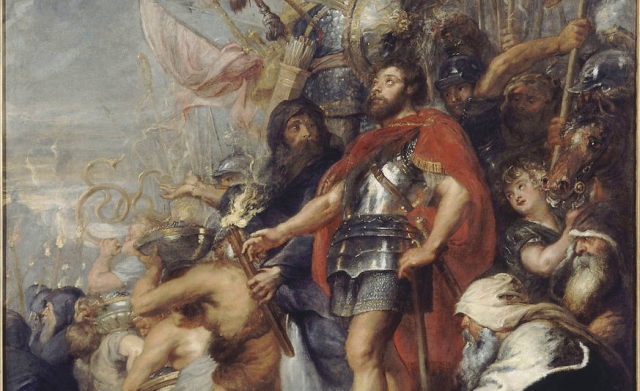Today is June 16. 2022 and the Hebrew date is 17th of Sivan 5782. On this day in Israel's long history, the Hasmonean Army won a pivotal battle against the Hellenists that ultimately led to the Judean victory and reclamation of Jerusalem and the Holy Temple.
The Hasmonean army known as the Maccabees was a Jewish army that revolted against the Syrian-Greek occupation in 139 BCE. It is the story of the Maccabees that inspired the holiday of Chanukah where the miraculous victory is celebrated. The name Maccabee is an acronym of their battle cry, ("מִֽי־כָמֹ֤כָה בָּֽאֵלִם֙ יְהוָ֔ה" -- "Mi Chamocha Ba'elim Adonai") which is translated into “who is like You Amongst All Powers, God?”
As the historical texts have it, after the routing of the Greeks during the Battle of Emmaus, the Seleucid Greek General who was governor of Syria named Lysias came to Judea to wage war against Judas Maccabeus who is also known as Juda Hamaccabee He changed the original plan of attack, deciding to come against Judah from the watershed route to the south. Judah was camped in an area the Greeks called Betsoura and the Judeans called Beit Tzur which is just west of Hebron. Lysias' army came from the south and took them by surprise.
The battle that resulted, known as 'The Battle of Beit Tzur' was not written of much in the traditional sources, it is there but not prominently featured. However, in religious lore, it is the pivotal moment of the struggle against the Greeks and is celebrated in a song that is sung each night of Channukah called 'Maoz Tzur'. Today, Beit Tzur is within the community of Karmei Tzur which is south of Jerusalem, near Hebron.
The site’s importance lay in its strategic location on a hilltop dominating the highway, preventing the approach of hostile armies from the Elah Valley to the Judean plateau. Josephus describes Beit Tzur as the mightiest stronghold in Judea.
Judah the Maccabee defeated the Seleucid forces and Lysias retreated in disgrace. This victory allowed the Maccabees to recapture Jerusalem and a negotiated peace orchestrated by Lysias. According to Josephus who cited written and oral sources, the key to the battle was the exploitation of the natural terrain and fortifications.
Once victorious, Judah rebuilt the old ramparts which were built over 100 years before and expanded the tower. The city remained peaceful for the most part after the Maccabean Wars were over, led by the reign of John Hyrcanus (134-104). However, by 100 BCE the town had reportedly been fully abandoned as it was no longer considered necessary to maintain the strategic post.


